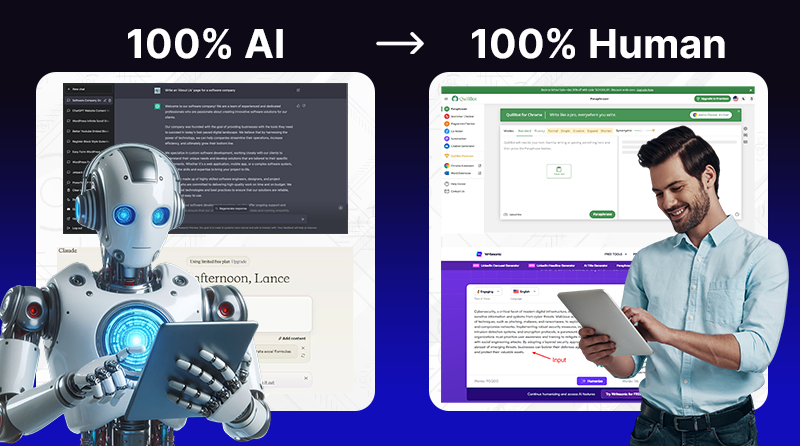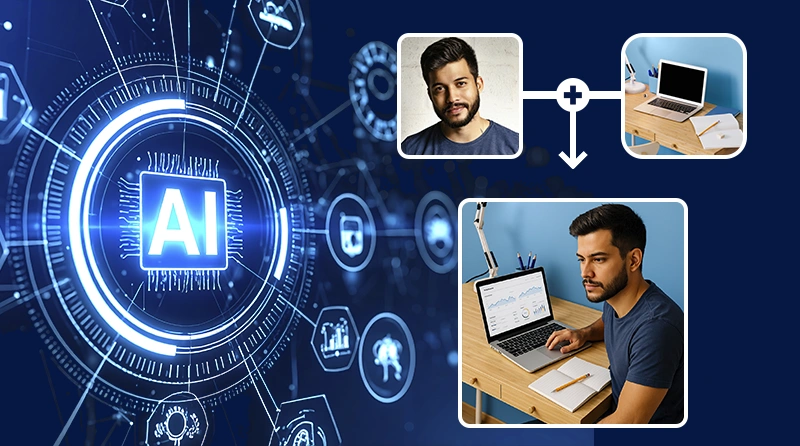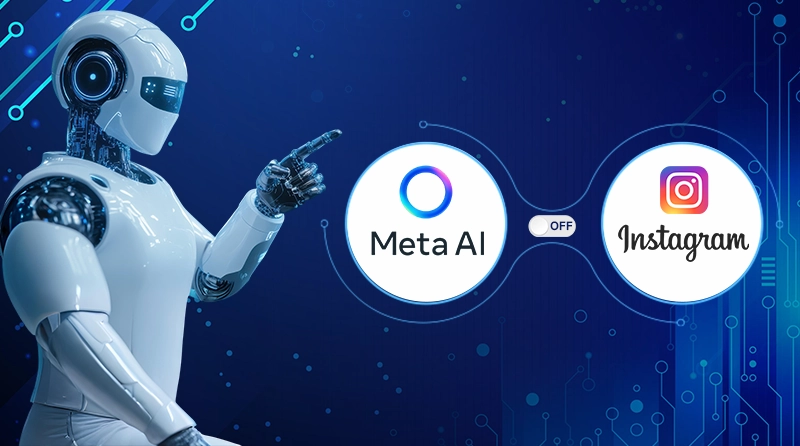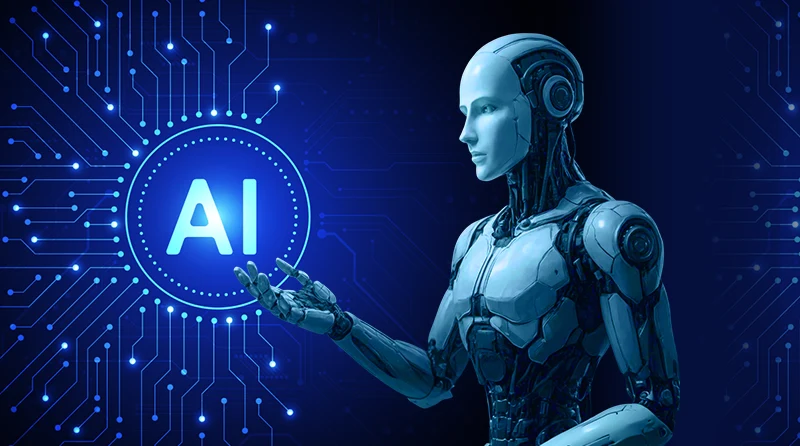20+ AI Project Ideas (Beginners, Students 2025)

In 2025, AI project ideas were not restricted to research labs or tech companies but were actual projects creating real-world solutions to everyday problems. AI has impacted our lives from health risk predictions to powering self-driving vehicles, and there is no indication that the growth of AI in industries will stop. The global AI market is expected to surpass $500 billion by 2030, as per the report suggested by Statista, which illustrates that learning to build an AI project is becoming a valuable skill for both beginners and students.
By definition, an AI project implies that machine learning (ML), deep learning and/or another type of intelligent system is used in developing a solution that tries to imitate human decision-making. Even if the project is a simple AI project like a chatbot or a complex computer vision system for monitoring traffic, completing an AI project will enhance your critical problem-solving skills and provide greater opportunities in your professional career.
Tip: Go with small projects that you can complete in weeks. Projects that will allow you to grow as you complete them, but will be small enough for you to gain confidence before doing a large project.
In this blog, we will cover over 20 AI project ideas for beginners and students. In each idea, you will identify a simple concept, outline what you can do with the idea, and what technologies you will need to bring it to life. So by the end of the blog, you’ll have an awesome list of AI projects that will not only help you develop your AI skills but also let you be more competitive so you stand out to individuals and organizations in an AI-dominated world.
What Is an AI Project?

An AI project is a real-world implementation of artificial intelligence (AI) technologies created to address certain problems or to carry out certain tasks which require human intelligence. Typically, the projects combine data, algorithms and computational power to create intelligent systems that are able to make predictions, recognize patterns, and process information more efficiently than humans.
AI projects use data science techniques such as machine learning (ML), deep learning, natural language processing (NLP), and computer vision in order to be able to process information into meaningful results. For example, ML can be leveraged to train a model on historical sales to forecast future demand, while computer vision can be used to detect defects in manufacturing lines in real-time.
Key Attributes of an AI Project:
- Data-centric: AI projects involve structured or unstructured data that is used to train and test.
- Use of algorithm: AI projects use techniques such as decision trees or support vector machines. Use of deep learning networks.
- Automation and prediction: AI projects automate human decisions and/or improve and provide a prediction component.
- Scalability: AI projects often yield AI solutions and capabilities that can be reused or expanded for various real-world problems beyond their original intent.
The demand for skilled AI experts is skyrocketing. By working on AI projects, beginners can learn the basics of ML algorithms, and students can work on more advanced problems like creating end-to-end AI models for healthcare diagnostics or personalized learning. Another value of working on AI projects is understanding user behavior, creating better product experiences, and building solutions that are innovative as well as ready for the marketplace.
Tip: When selecting an AI project, pick something that you are interested in, and think about the real-world impact. This will ensure more engagement and greater learning.
10 Best AI Project Ideas for Beginners

If you are new to the artificial intelligence (AI) world, taking on beginner-friendly AI project ideas will assist you in understanding key elements like machine learning algorithms, data preprocessing and the initial stages of training models. These projects can be challenging to develop with very little effort to implement, while allowing you to transition quickly from theory to practice.
Here are the 10 Best artificial intelligence project ideas for beginners:
1. Sentiment Analysis Tool
A sentiment analysis tool is a simple yet powerful AI application and a great option if you are beginning your AI journey. The sentiment analysis will use natural language processing (NLP) to assess text data, which could be anything from tweets, reviews, or survey responses, and will categorize the sentiment from the input as positive, negative, or neutral.
How it works: You can train a machine learning (ML) model using a labelled dataset that contains text labels and corresponding sentiment labels. You can use any ML algorith,m like Naïve Bayes or even logistic regression.
Potential Applications:
- Brand monitoring of social media
- Customer feedback analysis
- Political opinion analysis
Tools & Technologies: Python, NLTK, Scikit-learn
Tip: Start small and use anything like a dataset that contains IMDb movie reviews, before trying to scale-up to live social media feeds.
2. Handwritten Digit Recognition
This AI project will expose you to computer vision and deep learning. The idea is to recognize handwritten numbers (0-9) from an image, mostly using the MNIST dataset
How it works: A deep learning model, e.g. a Convolutional Neural Network (CNN), will process the pixel values and learns to classify the digits.
Potential Applications:
- Bank check processing
- Postal code identification
- Reviewing exam answer sheet
Tools & Technologies: Python, TensorFlow/Keras, OpenCV
Tip: Use different types of activation functions and see how they impact the accuracy of your model.
Read Also: Free AI Tools for Students
3. AI-Powered Chatbot
An AI chatbot is one of the most popular ai project ideas for beginners.
An AI chatbot is a great beginner AI project as it encompasses natural language processing with machine learning (ML) algorithms to mimic a human-type conversation.
How it works: You will provide conversational datasets to the chatbot for it to determine intents in order to return proper responses. This can be done rule-based or instead using a ML model, with the premise of enhancing its versatility with time.
Potential Applications:
- Customer service automation
- Website virtual assistants
- FAQ answering systems
Tools & Technologies: Python, Rasa, Dialogflow
Tip: Build a domain-specific chatbot, such as an e-commerce chatbot, before designing a general-purpose chatbot, virtual assistant.
4. Movie Recommendation System
The movie recommendation engine is a beginner-friendly AI project that will familiarise you with learning algorithms and user behaviour. The recommendation engine suggests movies based on a user’s watching history or user ratings.
How it works: You can build a collaborative filtering model that identifies users with similar profiles, or a content-based filtering model that can match movie attributes.
Potential Applications:
- OTT providers such as Netflix and Amazon Prime
- Personalized marketing campaigns
Tools & Technologies: Python, Pandas, Scikit-learn, Surprise library
Tip: Take advantage of open-source datasets such as MovieLens to quickly train and test your recommendation engine.
Read Also: Best AI Presentation Makers
5. Spam Email Classifier
One of the most useful real-world problems solved with an AI application, by far, is the protection from unsolicited emails or spam. The spam filtering AI project is one of the machine learning (ML) applications that takes advantage of certain algorithms to help detect spam messages with machine learning algorithms based on the analysis of the subject, the content of the email body, and/or the metadata.
How it is done: You can create a machine learning (ML) model using labelled datasets of spam and non-spam emails. Certain methods, such as Naïve Bayes, logistic regression or support vector machines (SVM), are particularly well suited for spotting spam emails.
Potential Applications:
- Email service providers
- Corporate Email Communication Security
Tools & Technologies: Python, Scikit-learn, NLTK
Tip: To avoid the model getting biased towards predicting spam or non-spam messages, try to get a balanced dataset.
6. AI Music Composer
Another idea is to create an AI music composer that is capable of generating melodies and/or background scores using deep learning techniques. This would be a fun AI project idea for creative beginners.
How it is done: Models like Long Short-term Memory (LSTM) networks learn patterns of previously composed music in order to generate all new sequences of music.
Potential Applications:
- Video game development
- Film background scores
- Personalized playlist generation
Tools & Technologies: Python, Magenta, TensorFlow
Tip: When developing your model, apply it to a different genre to see how well it can generalize to generate music in different styles.
7. Image Colourization Tool
Image colourization is an interesting computer vision task, where an algorithm colours black and white images.
How it works: Deep learning architectures (ex., Convolutional Neural Networks) have learned to predict colour values from the input of grey images
Potential Applications:
- Restoring old photographs
- Enhancing historical collections
- Generating creative content
Tools and Technologies: Python, OpenCV, Keras
Tip: Before training on large datasets of images, it is recommended to first start with a small image count (100-200 images).
Read Also: How to Turn Off Meta AI on Instagram?
8. Weather Forecasting Model
This artificial intelligence project takes a machine learning (ML) approach to predict the weather based on historical data.
How it works: The algorithm will use historical meteorological or weather data to train a ML model. After training, it will make use of ML tools such as Random Forest or Gradient Boosting to predict temperature, humidity, and rainfall. The algorithm can then make use of the previous data to predict in the future, and with the proper pipeline, this can be as instantaneous as a weather channel.
Potential Applications:
- Agriculture planning,
- Travel and events planning
Tools and Technologies: Python, Pandas, Scikit-learn.
Tip: Use a real-time API to create an instantaneous weather monitoring channel.
9. Fake News Detector
A fake news detector is a classification model for news articles utilizing natural language processing (NLP) to detect fake or real news.
How it works: A machine learning (ML) model can be trained on datasets with labelled news articles and headlines. Text vectorization methods can include TF-IDF to improve accuracy.
Potential Applications:
- Social media content verification
- News aggregator websites
Tools & Technologies: Python, NLTK, Scikit-learn.
Tip: Update your dataset frequently because misinformation trends change frequently.
10. AI-Based Language Translator:
Language translation models are highly sought after at the moment and is a great option for learning how to get started with machine learning (ML) and natural language processing (NLP).
How it works: translation is done by sequence-to-sequence (Seq2Seq) models or transformer architectures (BERT, GPT) that translate text and language.
Potential Applications:
- Travel apps
- Cross-border business communication.
Tools & Technologies: Python, TensorFlow, Hugging Face Transformers
Tip: Use language pairs that have availability to many datasets, like English-Spanish.
10 Best AI Project Ideas for Students

For students interested in solving real-world problems and building their portfolio, the AI project ideas will combine creativity and processes like deep learning, natural language processing or computer vision to push their relevance while developing new skills or experience in preparation for research, internships or a job!
Here are the 10 best artificial intelligence project ideas for students:
1. AI-Based Medical Diagnosis System
An AI-based medical diagnosis system uses deep learning and machine learning algorithms to extract disease information from medical data, like X-rays, MRI scans, and blood reports.
How does it work: A computer vision model, created with deep learning tools like Convolutional Neural Networks (CNNs), can be used for medical imaging to analyze medical imaging data to find any signs of disease. This can be done using open datasets, such as the ChestX-ray14 dataset.
Potential Applications:
- Detecting cancer at an early stage
- Automated reporting of radiological images
- Supporting health care in rural areas
Tools & Technologies: Python, TensorFlow/Keras, OpenCV
Tip: Work with medical professionals to label the elements of the dataset properly because this will help you improve the accuracy of your AI model.
2. AI Traffic Management System
This AI project uses computer vision and allows for the real-time management of traffic flow.
How does it work: Cameras provide live feeds of traffic, and machine-learning models capture vehicle density, and hence AI-controlled signalling can be achieved.
Potential Application:
- Traffic congestion reduction
- Emergency vehicle priority management
Tools & Technologies: Python, OpenCV, YOLO, TensorFlow
Tip: Try to use traffic datasets if you are not able to get real-time feeds from cameras.
Read Also: Best AI Humanizer Tools
3. AI-Powered Resume Screener
An intelligent resume screening system is an excellent project that will take advantage of automating HR related work. An intelligent resume screening system will use natural language processing (NLP) to screen resumes in order to shortlist candidates based on job requirements.
How does it work: Machine learning (ML) algorithms will take information that is provided by an applicant to pull out relevant experience and skills to determine matching data to the job description provided by the user.
Potential Application:
- HR related recruitment automation
- Candidate ranking systems
Tools & Technologies: Python, NLTK, Spacy
Tip: Add a feedback loop to help improve selection accuracy on the basis of HR feedback.
4. AI-Driven Disaster Management System
Artificial intelligence (AI) can help predict and manage natural disasters using historical events and environmental data.
How it works: the environmental data is analyzed using machine learning algorithms to predict the impact of potential natural disasters (floods, earthquakes, etc). With input from a variety of sensors, including weather station sensors, satellite imagery, and seismic activity, AI can assist in building predictive models.
Potential Applications:
- Early warning systems
- Disaster response planning
Tools & Technologies: Python, Scikit-learn; TensorFlow
Tip: Use geospatial datasets to predict location-based predictive results.
5. Intelligent Tutoring System
AI can use environmental data as well as historical events to cause disasters and report results.
How it works: Using historical environmental data and machine learning algorithms will analyze the data to develop the likely impacts of some potential disasters (floods, groundquakes, etc). Using multiple data points, acquired from sensors such as weather station sensors, satellite data, or seismic activity, predictive models can be developed.
Potential Applications:
- Early warning systems
- Disaster response planning
Tools & Technologies: Python, Scikit-learn, TensorFlow
Tip: Consider using geospatial datasets to yield location-based results.
6. AI Fraud Detection System
The AI fraud detection solution detects fraudulent activity by looking for unusual patterns in transactions, which it can use to reduce financial crime.
How it Works: The machine learning model is based on a historical data sample of transactions into classes of “normal” and “suspicious” transactions, where “suspicious” was based on transaction behaviours that were abnormal using classifiers such as support vector machines (SVM) or Random Forest.
Potential Applications:
- Banking sector and credit card companies
- Fraud detection in e-commerce
Tools and Technologies: Programming languages (Python, Scikit-learn, Pandas)
Tip: Use an imbalanced data strategy such as SMOTE to assist in detection of rare instances of fraud.
7. AI-Based Agricultural Monitoring
The AI for crop health monitoring and disease detection uses computer vision and deep learning.
How it works: A machine learning model will analyze drone or satellite images and determine if there are unhealthy areas anywhere on the field.
Potential Applications:
- Precision farming
- Pest management
Tools & Technologies: Programming languages (Python, TensorFlow, OpenCV)
Tip: Use AI in addition to IoT sensors in order to monitor a field in real-time.
8. AI Energy Consumption Optimizer
The AI energy optimizer is a type of machine learning that predicts energy consumption and tries to minimize wasted energy.
How It Works: The model uses historical energy usage data to determine the best timing to operate, based on historical usage as well as enterprise machine learning algorithms that use existing historical data to determine energy usage optimizations.
Potential Applications:
- Smart homes
- Industrial energy management systems
Tools & Technologies – Programming language (Python) and libraries (Scikit-learn, Pandas)
Tip: Solve a real-world use case (such as predicting peak energy demands) to learn more about energy waste and finding a solution to reduce it.
9. AI-Based Financial Market Predictor
This AI project predicts the movement of stock prices using machine learning and deep learning.
How It Works: The stock price is tracked in time-series data. LSTM neural networks can find patterns with price movement constrained to the last observed time-series.
Potential Applications:
- Supporting a stock broker.
- Risk management that identifies stocks to avoid and stocks to invest in.
Tools & Technologies: Python, Keras, Pandas
Tip: Use sentiment analysis to look at news headlines to improve the quality of your predictions.
10. AI-Powered Smart Home Security System
This smart home security system uses computer vision to determine if someone is breaking into your home and instantly notify the homeowner.
How It Works: The security camera is streaming a video and the machine learning model is recognizing the activity as strange or it is recognizing an unknown face.
Potential Applications:
- Giving back to the homeowner in safety.
- Monitoring commercial buildings.
Tools & Technologies: Python, OpenCV, TensorFlow, Raspberry Pi
Tip: Offline processing so the system can still run effectively without needing an internet connection.
Conclusion on Artificial Intelligence Project Ideas
The best way to develop your skills in artificial intelligence and use your knowledge to address real-life challenges is by investigating some AI project ideas. Practicing with different AI projects, regardless of whether you’re a beginner using simple data to create an AI project, such as sentiment analysis, or you are a student using more complex systems to create AI projects, like computer vision-based medical diagnostics, you will have a better understanding of machine learning algorithms, handling data, and deploying models.
By applying deep learning, natural language processing, or advanced machine learning algorithms in projects, you are also advancing your technical capabilities while developing your problem-solving mentality. In an era of AI transforming every industry from healthcare to finance, these projects will definitely help to differentiate yourself in domain jobs and academic studies.
Tip: Start with a basic AI project, record your progress, and continue to work on your AI model. Remember that iteration is most important.
The future belongs to people who can take theory and create something useful. Pick a project from this list, make it your own, and start building today.
Frequently Asked Questions
Let us answer some of the frequently asked questions regarding AI projects:
1. Why should I start with beginner AI project ideas
Beginner projects simplify the confusing AI paradigms impacting contemporary AI technologies. Beginner projects allow you to learn machine learning and deep learning functions, methods, and principles before moving on to more advanced projects.
2. What tools are best for AI projects?
Popular practical tools include: Python, TensorFlow, Keras, Scikit-learn, and OpenCV; these work well on projects targeting computer vision or natural language processing..
3. How do AI projects help students?
They allow students to solve real-world problems, demonstrate the application of theoretical knowledge, and develop a portfolio of work for future internships or research work.
4. Can I build an AI project without coding experience?
Yes. Tools like Google Teachable Machine or low-code AI tools are available for you to create functioning prototypes without a ton of programming.
5. What is the difference between an AI model and a machine learning model?
From a high vague level, an AI model is any system that acts smart like a human. A machine learning model is a particular type of AI model that learns patterns from data.




![10 Best AI Note-Taking Apps [ 2025 Note Taker Tools]](https://awesmai.com/wp-content/uploads/2025/07/Best-AI-Note-Taking-Apps.webp)


![10 Best AI Presentation Makers [2025 Free + Paid]](https://awesmai.com/wp-content/uploads/2025/08/Best-AI-Presentation-Makers.webp)







